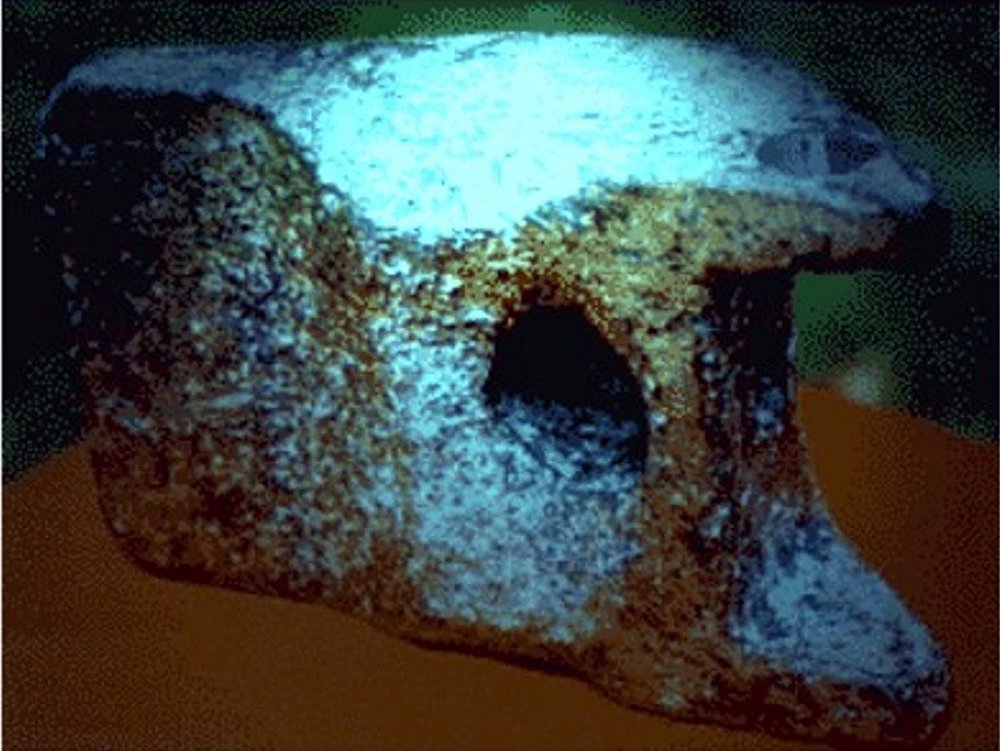Millennia Old Extremely Complex Object Of Unknown Origin
A. Sutherland - AncientPages.com - Aluminum (also aluminium) was used at least 7,000 years ago and our modern discovery of this valuable metal is nothing but a re-invention based on the knowledge our ancestors already possessed.
Danish physicist Hans Christian Oersted - credited for the invention of aluminum - was not the first person who invented aluminum. This metal was used at least 7,000 years ago and our modern discovery of this valuable metal is nothing but a re-invention based on the knowledge our ancestors already possessed.
The mysterious object, approximately 1mm thick and covered with a layer of aluminum oxide was discovered in Aiud, Romania. It's considered to be millennia old.
While excavating in Iraq, archaeologists discovered pottery produced around 5,300 B.C. These artifacts were made of clay that contained aluminum. There is also archaeological evidence Egyptians and Babylonians used aluminum compounds in various medicines and chemicals almost 4,000 years ago.
In his writings, Pliny the Elder (AD 23 – 79.), a Roman scholar described an element he called alumen.
At the beginning of 1974, a strange object was brought to light by a group of construction workers digging in the area of central Romania.
The discovery was made at the depth of approximately ten meters, in the sediments of the river Mures, 2 km east of Aiud, and about 50 km south of Cluj-Napoca, the former capital of Transylvania. This artifact was discovered together with very ancient bones, (including the jaw) of a mastodon, in a sandpit under a 35-foot-thick layer of sand.
Such an extraordinary finding raises interesting questions that cannot be answered easily.
At first, the finding appeared to be a dark stone, but after removing the thick crust of sand from its surface, it was revealed a metal object of unknown origin.
The specimen is 20.2 cm long, 12.7 cm wide, 7 cm high, and has a circular depression (4 cm in diameter) in the center.
Another smaller hole with a diameter of 1.7 cm and perpendicular to the first exit is on the other side of the mysterious object. This and the two side panels show evidence suggesting that they may have been obtained as a result of very strong shocks. Was it once a part of a larger tool? Still, the purpose of this tool remains unknown.
Two fin-shaped protrusions at the end of the artifact are clearly visible, but their purpose is unknown.
In the beginning, no one was particularly interested in the artifact, so it landed in a storage room at the Historical Museum of Transylvania and remained there unnoticed for 21 years.
It was not until 1995, the piece of metal, weighing 2.3 kilograms was "rediscovered" and analyzed.
A detailed metallurgical analysis conducted at the Institute for Research of Minerals and Metals in Turnu Magurele, a city located south-west of Bucharest, has revealed that the object in question was extremely complex and consisted of an alloy of several elements, such like:
89% aluminum,
6.2% Cu copper,
2.8% Si silicon,
1.8% Zn Zinc,
0.4% Pb Lead,
0.3% Sn tin,
0.2% Zr zirconium,
0.1% Cd cadmium.
Additionally, small parts of nickel (Ni), cobalt (Co), bismuth (Bi), silver (Ag), and trace amounts of gallium (Ga) were also found.
The object was composed largely of aluminum (89%), a metal often found in nature, however, not only in pure form but the state of bauxite, from which most aluminum is extracted.
As we know, the aluminum was discovered in 1825 by H. C. Oersted and produced for the first time on an industrial scale in France in 1854.
However, it would take years upon years of deliberate research to find an efficient method to unlock the metal from its ore and even more years to create a production process that would allow the metal to be commercially practical.
For the production of aluminum, you need a complicated industrial process, electrolysis, and temperatures above 900 ° C.
This mysterious object found in Aiud, which is considered at least tens of thousands of years old, was covered with a layer of aluminum oxide about 1 mm thick.
"Aluminium" knowledge was apparently rediscovered by us quite so recently.
So, what is this old artifact?
Written by – A. Sutherland - AncientPages.com Senior Staff Writer
Copyright © AncientPages.com All rights reserved. This material may not be published, broadcast, rewritten or redistributed in whole or part without the express written permission of AncientPages.com
More From Ancient Pages
-
 What Happened To The Staircase In The Temple Of The Goddess Hathor?
Civilizations | Mar 9, 2017
What Happened To The Staircase In The Temple Of The Goddess Hathor?
Civilizations | Mar 9, 2017 -
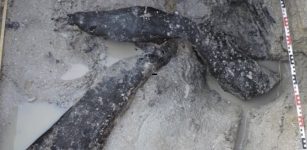 Discovery Of Half-Million-Year-Old Wooden Structure Shows We’re Wrong To Underestimate Our Ancient Relatives
Featured Stories | Oct 10, 2023
Discovery Of Half-Million-Year-Old Wooden Structure Shows We’re Wrong To Underestimate Our Ancient Relatives
Featured Stories | Oct 10, 2023 -
 Illapa: Powerful Master Of Clouds, Rain And Hail – Worshipped By Inca People
Featured Stories | Jul 7, 2016
Illapa: Powerful Master Of Clouds, Rain And Hail – Worshipped By Inca People
Featured Stories | Jul 7, 2016 -
 Hesperides – Greek Nymphs Who Guarded Fabled Garden With Divine Apples Of Immortality
Featured Stories | Jun 4, 2020
Hesperides – Greek Nymphs Who Guarded Fabled Garden With Divine Apples Of Immortality
Featured Stories | Jun 4, 2020 -
 Basajaun: Giant Blacksmith, ‘Lord Of The Woods’ And How People Learned Secrets Of Agriculture
Featured Stories | Aug 27, 2020
Basajaun: Giant Blacksmith, ‘Lord Of The Woods’ And How People Learned Secrets Of Agriculture
Featured Stories | Aug 27, 2020 -
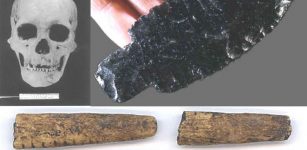 Buhl Woman Of Idaho: One Of The Oldest Skeletons In North America
Civilizations | Jun 3, 2023
Buhl Woman Of Idaho: One Of The Oldest Skeletons In North America
Civilizations | Jun 3, 2023 -
 Oshun Goddess Of Yoruba People Who Brings All Things That Make Life Worth Living
African Mythology | Mar 29, 2019
Oshun Goddess Of Yoruba People Who Brings All Things That Make Life Worth Living
African Mythology | Mar 29, 2019 -
 Lofn ‘Matchmaker’ – Norse Goddess Of Forbidden Marriages Of People Who Wish To Be Loved And Search For Partners
Featured Stories | Mar 25, 2021
Lofn ‘Matchmaker’ – Norse Goddess Of Forbidden Marriages Of People Who Wish To Be Loved And Search For Partners
Featured Stories | Mar 25, 2021 -
 Baba Yaga: Enigmatic, Powerful Archetypal Witch In Slavic Folklore
Slavic Mythology | May 16, 2016
Baba Yaga: Enigmatic, Powerful Archetypal Witch In Slavic Folklore
Slavic Mythology | May 16, 2016 -
 Unexplained Lights Over English City Reported By Police May Have A Deeper Meaning
Featured Stories | Dec 11, 2019
Unexplained Lights Over English City Reported By Police May Have A Deeper Meaning
Featured Stories | Dec 11, 2019 -
 Kali – Hindu Goddess Of Death, Fear And Horror Who Destroys Ignorance, Evil And Establishes World Order
Featured Stories | Sep 28, 2021
Kali – Hindu Goddess Of Death, Fear And Horror Who Destroys Ignorance, Evil And Establishes World Order
Featured Stories | Sep 28, 2021 -
 Freya – Vanadis: Beautiful Desirable Goddess And Her Brisingamen Necklace In Norse Mythology
Featured Stories | Jan 21, 2018
Freya – Vanadis: Beautiful Desirable Goddess And Her Brisingamen Necklace In Norse Mythology
Featured Stories | Jan 21, 2018 -
 Mystery Of Giant Gogmagog’s Hidden Treasure Beneath Castell Dinas Bran
Featured Stories | Oct 15, 2021
Mystery Of Giant Gogmagog’s Hidden Treasure Beneath Castell Dinas Bran
Featured Stories | Oct 15, 2021 -
 Cryptic North American Blythe Intaglios Reveal The Creator Of Life: Who Was This Unknown Being?
Featured Stories | Aug 23, 2014
Cryptic North American Blythe Intaglios Reveal The Creator Of Life: Who Was This Unknown Being?
Featured Stories | Aug 23, 2014 -
 Remarkable Skill Of Ancient Peru’s Cranial Surgeons
Ancient Technology | Jun 11, 2018
Remarkable Skill Of Ancient Peru’s Cranial Surgeons
Ancient Technology | Jun 11, 2018 -
 Ancient Secrets Of The Damascus Steel – Legendary Metal Used By Crusaders And Other Warriors
Artifacts | May 28, 2020
Ancient Secrets Of The Damascus Steel – Legendary Metal Used By Crusaders And Other Warriors
Artifacts | May 28, 2020 -
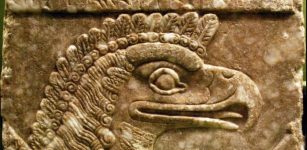 Adapa – Why Did The Wise Apkallu Refuse The Gift Of Immortality?
Featured Stories | May 9, 2019
Adapa – Why Did The Wise Apkallu Refuse The Gift Of Immortality?
Featured Stories | May 9, 2019 -
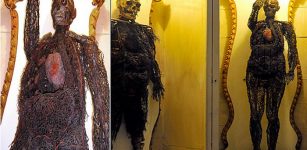 Incredible Anatomical Human Machines – Two Fleshless Bodies Mystery
Featured Stories | Jul 24, 2018
Incredible Anatomical Human Machines – Two Fleshless Bodies Mystery
Featured Stories | Jul 24, 2018 -
 Ancient ‘Cosmic’ Artifacts – Ancient Civilizations Used Meteoric Iron Much Earlier Than Previously Thought
Archaeology | Dec 6, 2017
Ancient ‘Cosmic’ Artifacts – Ancient Civilizations Used Meteoric Iron Much Earlier Than Previously Thought
Archaeology | Dec 6, 2017 -
 Mysterious Hockomock Swamp – A Vortex To The Unknown In Massachusetts?
Featured Stories | Oct 9, 2019
Mysterious Hockomock Swamp – A Vortex To The Unknown In Massachusetts?
Featured Stories | Oct 9, 2019



